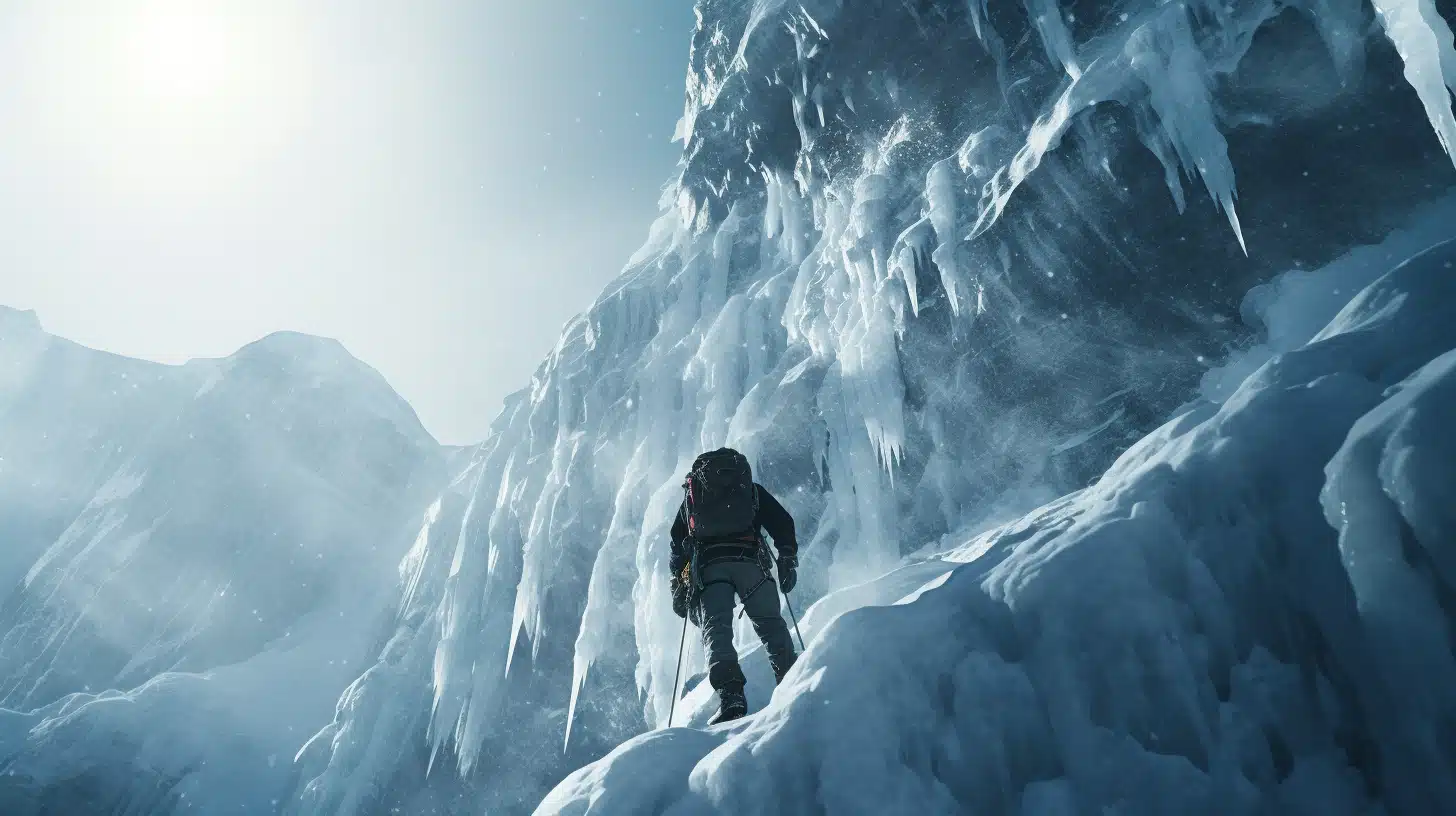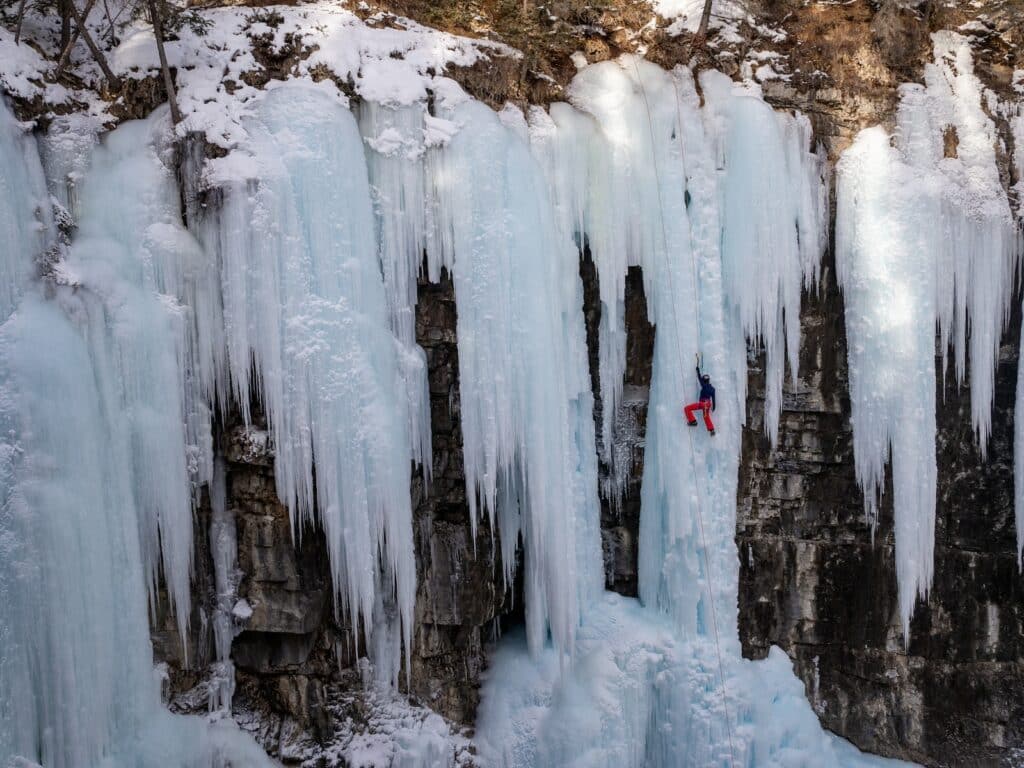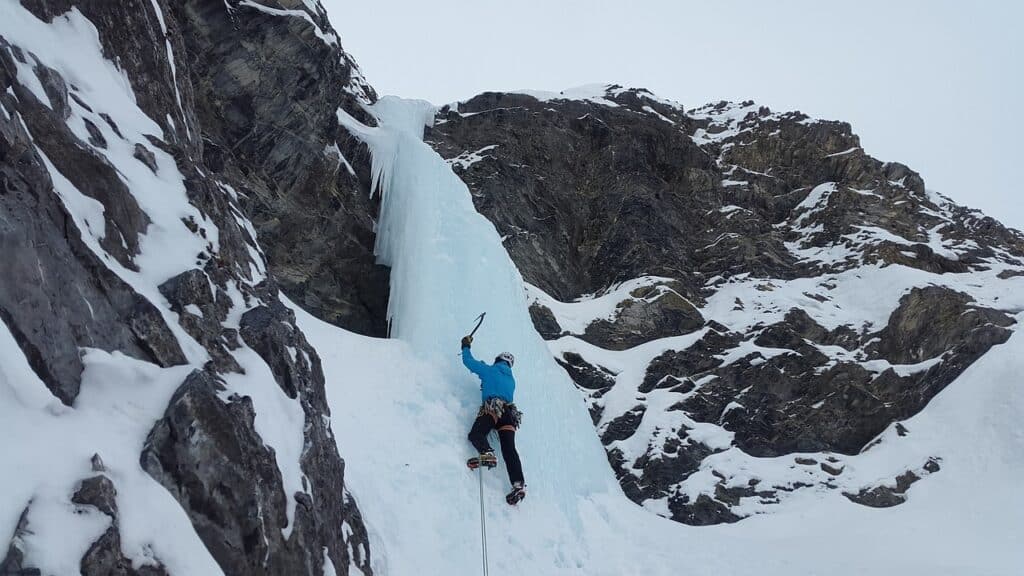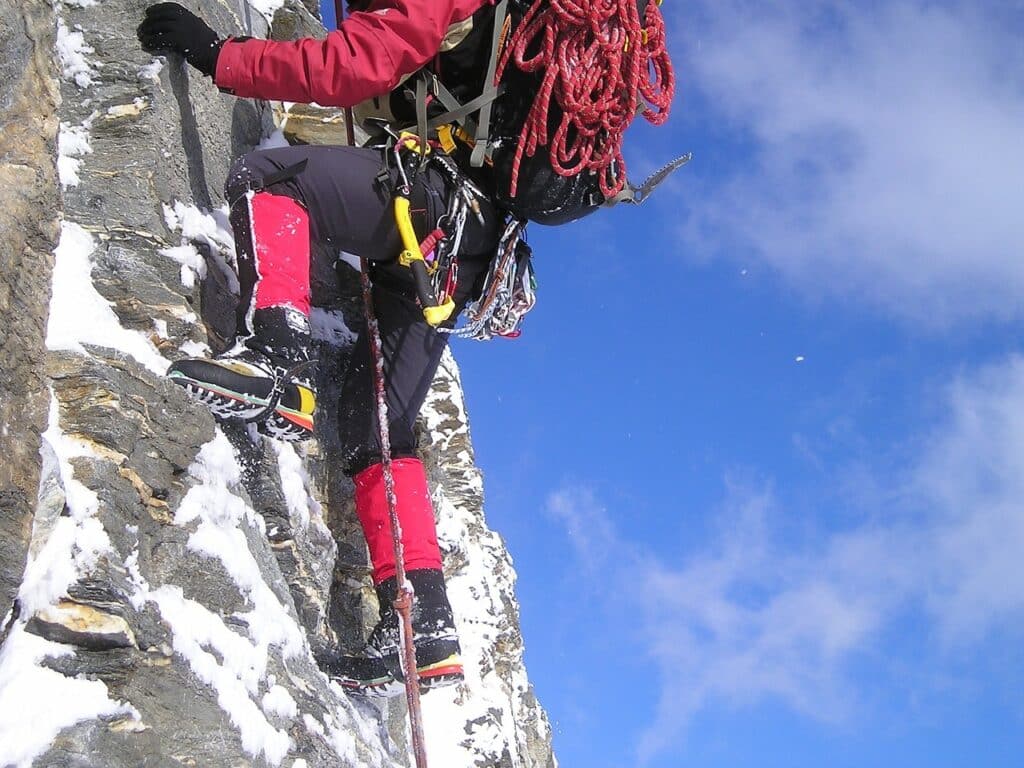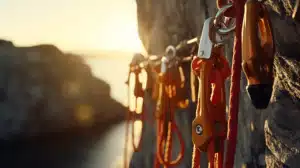Table of Contents
ToggleIce Climbing Soloing: A High-Risk Endeavor
Ice climbing soloing is an exhilarating yet high-risk activity that requires advanced technical skills, physical fitness, and mental fortitude. It involves ascending ice formations without the assistance of a climbing partner. While soloing can provide a sense of freedom and personal achievement, it is crucial to be aware of the inherent dangers and take necessary precautions.
The Dangers of Ice Climbing Soloing
Ice climbing soloing presents unique risks compared to climbing with a partner. Without a partner to provide assistance or spot potential hazards, climbers must rely solely on their own skills and judgment. The absence of a belayer means that any mistakes or misjudgments can have severe consequences.
Some of the dangers associated with ice climbing soloing include:
- Increased risk of falling: Without a rope and partner to arrest a fall, the consequences of a slip or mistake can be dire. Climbers must be extremely cautious and confident in their abilities.
- Limited rescue options: In case of an accident or emergency, solo climbers have limited options for self-rescue. It is crucial to have a strong understanding of self-rescue techniques and be prepared to handle potential emergencies.
- Exposure to harsh conditions: Solo climbers are more vulnerable to extreme weather conditions, avalanches, and other environmental hazards. It is essential to have a thorough understanding of ice climbing conditions and be prepared for changing circumstances.
Factors to Consider Before Attempting Solo Climbs
Before attempting ice climbing soloing, several factors should be carefully considered:
- Experience and competence: Building a solid foundation of experience and competence in ice climbing is crucial for safe solo climbing. It is recommended to start solo climbing on routes that are well within your comfort zone and gradually progress to more difficult climbs as your skills and confidence increase.
- Mental preparation: Solo climbing can be mentally challenging, requiring climbers to be comfortable with solitude and effectively manage fear and anxiety. Developing a strong mental mindset is essential to stay focused and make sound decisions while climbing alone.
- Risk assessment and decision-making: Solo climbers must be able to assess the ice conditions, anticipate changes, and make quick decisions to ensure their safety. Developing good judgment and risk management skills is vital for safe solo climbing.
It is important to emphasize that solo ice climbing should never be attempted without proper training, equipment, and risk management strategies in place. Climbers must have a comprehensive understanding of climbing techniques, avalanche awareness, and self-rescue skills before venturing into solo climbs.
By understanding the risks and taking necessary precautions, ice climbers can approach soloing with a heightened level of safety awareness. However, it is recommended that novice climbers gain experience and skills through climbing with a partner and under the guidance of experienced climbers or instructors before considering the challenges of ice climbing soloing.
Techniques and Methods for Ice Climbing Soloing
When it comes to ice climbing soloing, there are different techniques and methods to consider. Each approach has its own risks, recommendations, possibilities, and limitations. In this section, we will explore three common methods: lead soloing on ice, rope soloing on ice, and top roping solo on ice.
Lead Soloing on Ice: Risks and Recommendations
Lead soloing on ice involves climbing without a partner or belayer. While some experienced climbers may choose this method, it is generally not recommended for beginners or those without significant experience. Falling without a rope can result in serious injury or even death. It is important to only attempt lead soloing on ice within your comfort zone and only on routes that you can comfortably solo.
Rope Soloing on Ice: Possibilities and Limitations
Rope soloing on ice involves climbing with a rope but without a partner. This method typically requires the use of specialized equipment, such as ascenders, to ascend the rope. It is important to note that using a Gri Gri for soloing on ice is not recommended, as it may not work effectively on icy ropes. Gri Gris are not ideal for winter usage.
Rope soloing on ice with just one ascender is possible depending on the conditions. However, it is not the safest method and may require careful assessment of the ice quality and stability. It is crucial to ensure that you have the necessary skills and experience before attempting rope soloing on ice.
Top Roping Solo on Ice: Safety Measures and Considerations
Top roping solo on ice involves climbing with a fixed rope anchored at the top of the route. This method can be done by pre-tying knots every 5-6 feet and clipping into alternate locked carabiners as you ascend. However, it is important to note that this method may result in falls and potential injuries, especially if you are not experienced in self-rescue techniques.
When top roping solo on ice, it is generally recommended to focus on climbing perfectly rather than relying solely on rope tricks that may not significantly increase safety. It is important to have a solid foundation of climbing skills and experience before attempting this method. Additionally, always ensure that your equipment, including ropes and anchors, is in good condition and appropriate for the climb.
Remember, ice climbing soloing should only be attempted by experienced climbers who have developed the necessary skills and knowledge. It is crucial to prioritize safety, risk management, and proper training when venturing into ice climbing soloing. For more information on ice climbing safety and techniques, feel free to explore our articles on ice climbing safety and ice climbing techniques.
Developing the Skills for Ice Climbing Soloing
When it comes to ice climbing soloing, it is essential to develop the necessary skills and mindset to ensure a safe and successful ascent. In this section, we will explore key aspects of skill development for ice climbing soloing, including building a solid foundation of experience and competence, mental preparation, and progressing safely within your comfort zone.
Building a Solid Foundation: Experience and Competence
Before attempting solo ice climbs, it is crucial to have a solid foundation of experience and competence in ice climbing. This means gaining proficiency in basic ice climbing techniques, such as using ice climbing axes and crampons, understanding ice climbing grades, and being familiar with ice climbing equipment and gear (wildmonkeyclimbing.com). It is recommended to start with guided climbs or seek the guidance of experienced climbers to build your skills and confidence.
Practicing on different ice climbing routes and conditions will help you develop a better understanding of the sport and improve your overall climbing ability. Consider taking part in ice climbing training programs or workshops to further enhance your skills and knowledge (wildmonkeyclimbing.com). Remember, learning and gaining experience should be an ongoing process in ice climbing.
Mental Preparation for Solo Ice Climbing
Solo ice climbing requires not only physical skills but also mental preparation. Climbing alone can be mentally challenging, as there is no partner to provide assistance or spot potential hazards. It is essential to develop a unique mindset that allows you to manage fear, anxiety, and solitude effectively. Focus and concentration are vital, as you must assess ice conditions, anticipate changes, and make quick decisions to ensure your safety.
To prepare mentally, visualize the climb, familiarize yourself with the route, and mentally rehearse each move. Develop techniques to stay relaxed, calm, and controlled during the climb, as this can lead to more efficient use of physical resources and increase the chances of a safe and successful ascent. Engaging in mindfulness or meditation practices can also help cultivate a focused and calm mindset.
Progressing Safely: Starting within Your Comfort Zone
Safety should always be the top priority in ice climbing soloing. To ensure a safe progression, it is important to start with climbs that are well within your comfort zone. This allows you to build confidence, practice your skills, and develop a better understanding of your capabilities. As you gain experience and competence, you can gradually progress to more challenging climbs.
Pushing yourself too far beyond your comfort zone without the necessary skills and experience can increase the risks involved in ice climbing soloing. It is essential to be realistic about your abilities and limitations. Taking calculated risks and making informed decisions about which routes to attempt will help you progress safely and enjoy the sport to its fullest.
Remember, solo ice climbing should never be attempted without proper training, equipment, and risk management strategies in place. It is important to have a comprehensive understanding of climbing techniques, avalanche awareness, and self-rescue skills before venturing into solo climbs. By building a solid foundation of experience and competence, preparing mentally, and progressing within your comfort zone, you can develop the skills necessary for safe and rewarding solo ice climbing adventures.
Safety Measures and Risk Management in Ice Climbing Soloing
When it comes to ice climbing soloing, safety should always be the top priority. Proper training, equipment, and risk management strategies are essential to ensure a safe and enjoyable experience. In this section, we will discuss some important safety measures and risk management techniques to consider before embarking on solo ice climbs.
Proper Training and Equipment for Solo Ice Climbing
Solo ice climbing should never be attempted without proper training, equipment, and risk management strategies in place. It is crucial to have a comprehensive understanding of climbing techniques, avalanche awareness, and self-rescue skills before venturing into solo climbs. Consider taking ice climbing courses or seeking guidance from experienced climbers to develop the necessary skills and knowledge.
In terms of equipment, ensure that you have the appropriate gear for ice climbing soloing. This includes ice climbing axes, ice climbing boots, ice climbing crampons, ice climbing harnesses, ice climbing ropes, ice climbing helmets, and other necessary protective gear. Investing in high-quality equipment designed specifically for ice climbing is crucial for your safety. For a comprehensive list of gear and equipment, check out our article on ice climbing gear.
Self-Rescue Techniques and Avalanche Awareness
Being prepared for emergencies and knowing self-rescue techniques is essential when ice climbing solo. Familiarize yourself with techniques such as ascending ropes, rappelling, and crevasse rescue. These skills can help you in situations where you need to rescue yourself or assist others in need. It is recommended to practice these techniques under the guidance of experienced climbers or through organized training programs.
Avalanche awareness is another critical aspect of ice climbing soloing. Educate yourself about avalanche conditions, terrain evaluation, and rescue procedures. Stay updated on local avalanche forecasts and make informed decisions based on current conditions. Always carry essential avalanche safety gear, including an avalanche transceiver, shovel, and probe. Understanding and respecting the risks associated with avalanches is vital for your safety.
Risk Assessment and Decision-Making on Solo Climbs
Before attempting a solo ice climb, carefully assess the risks involved. Consider factors such as weather conditions, ice quality, route difficulty, and your own physical and mental capabilities. It is important to be honest with yourself about your skill level and experience. Start within your comfort zone and gradually progress to more challenging climbs.
Effective decision-making is crucial in ice climbing soloing. Be prepared to turn back or change your plans if conditions become unfavorable or if you encounter unexpected hazards. Remember, the goal is to return safely from your climb. Trust your instincts and listen to your body. If something doesn’t feel right, it’s better to exercise caution and postpone your climb.
By prioritizing safety, investing in proper training and equipment, and making informed decisions, you can minimize the risks associated with ice climbing soloing. Remember to always stay updated on the latest techniques, equipment advancements, and safety guidelines. With the right preparation and mindset, you can enjoy the intensity and beauty of ice climbing soloing while ensuring your well-being.

